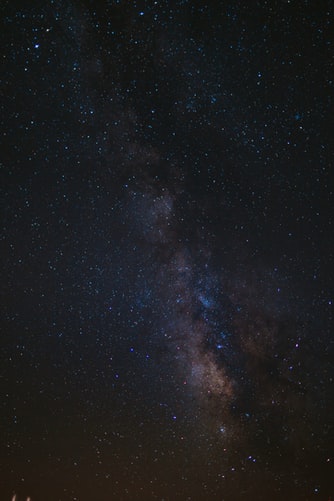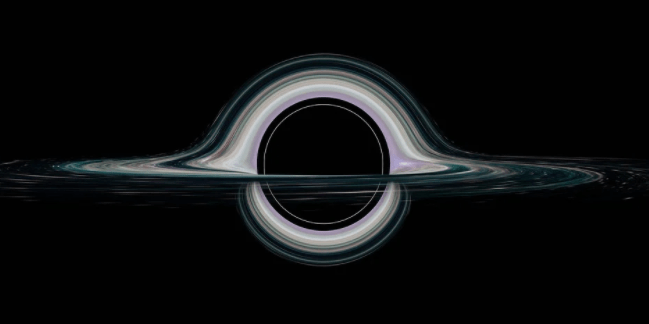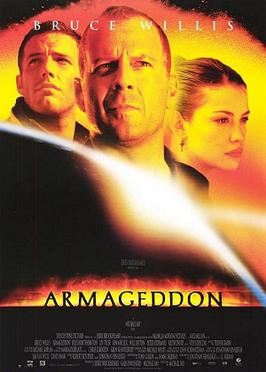Time Dilation Near Black Holes: How Gravity Affects Time in Space
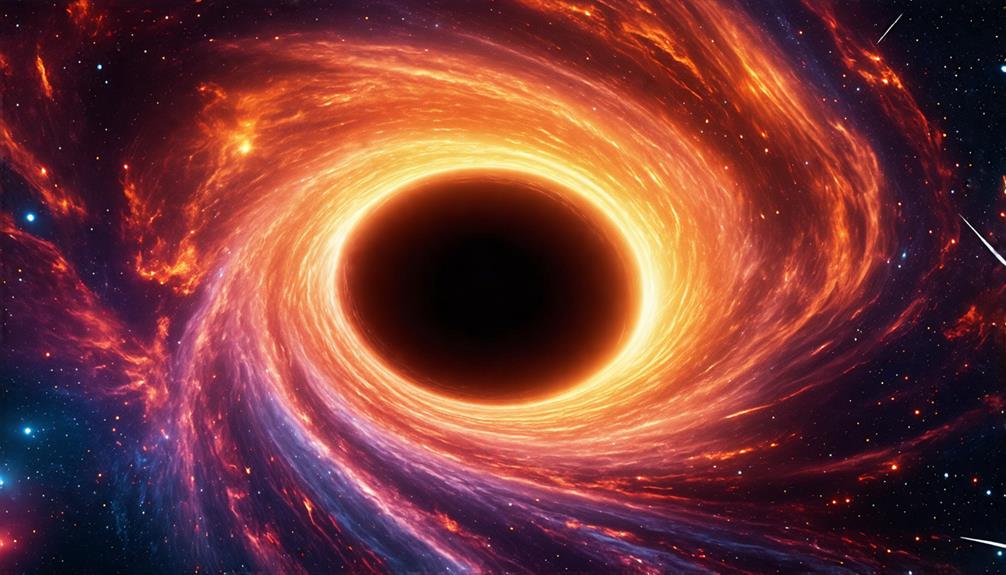
As you explore the enigmatic nature of black holes, you can't help but wonder how gravity dramatically alters the passage of time. Near a black hole's event horizon, time behaves in ways that defy conventional understanding; a mere year near the event horizon could stretch into decades for an observer far away. This phenomenon raises intriguing questions about the relationship between spacetime and gravity. What does this mean for our perception of time itself? The implications are profound and could reshape our view of the universe.
Understanding Black Holes
Black holes are fascinating cosmic entities formed from the remnants of dying stars, creating gravity so intense that nothing, not even light, can escape their grasp. As an observer, you may wonder about their structure and behavior. One significant feature is the event horizon, which marks the boundary beyond which no matter or information can escape. Once something crosses this threshold, it is lost to the observable universe, prompting intriguing questions about its fate.
The gravitational field around black holes is incredibly powerful, affecting nearby matter and light. This intense gravity leads to the formation of accretion disks—swirling rings of gas and dust that spiral into the black hole. As this material accelerates and heats up, it emits X-rays, allowing astronomers to study black holes indirectly.
Black holes come in various sizes, from stellar black holes with a few solar masses to supermassive black holes at galactic centers, boasting billions of solar masses. The study of black holes has evolved through the lens of relativity, illuminating the complex interactions between gravity and time. Further exploration of these interactions will be discussed in the next section.
The Nature of Time Dilation
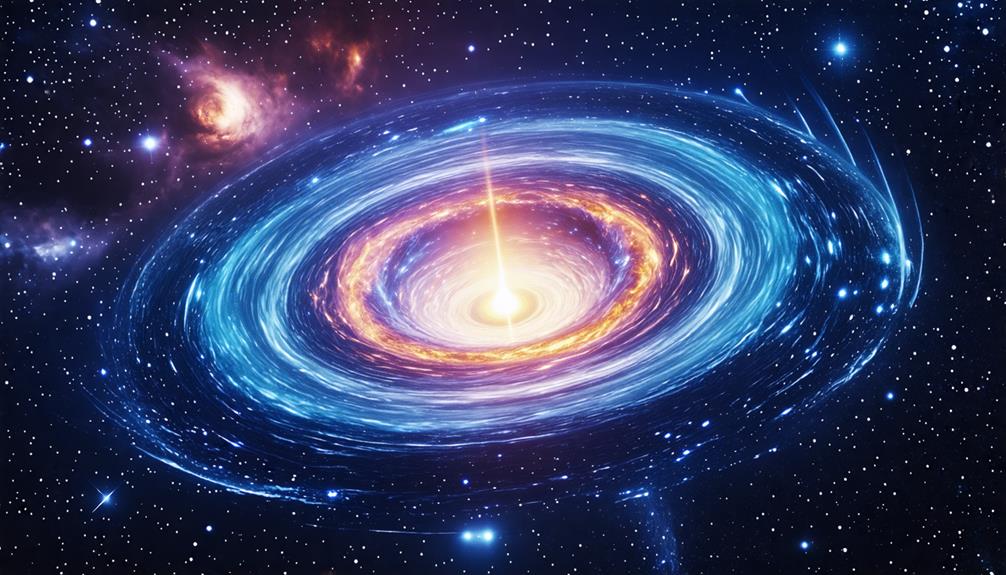
Time dilation near black holes vividly demonstrates how gravity distorts the fabric of spacetime, resulting in significant differences in the passage of time for observers at varying distances. As one approaches the event horizon, the effects of gravitational time dilation become increasingly pronounced. For instance, if you were positioned just 1.00005 times the Schwarzschild radius from a black hole, one year for you would equate to about 141 years on Earth.
This phenomenon is a cornerstone prediction of general relativity, which illustrates how massive objects like black holes warp spacetime. Observers far from the black hole perceive objects nearing the event horizon as moving slower, creating the illusion that they are nearly frozen due to extreme time dilation.
Gravitational time dilation affects not just clocks but also biological processes, leading to substantial differences in lifespan between observers at different gravitational potentials. This intricate relationship between time and gravity underscores the interconnectedness of our understanding of the universe, highlighting the extraordinary nature of time itself in the vicinity of black holes.
Gravitational Effects on Time
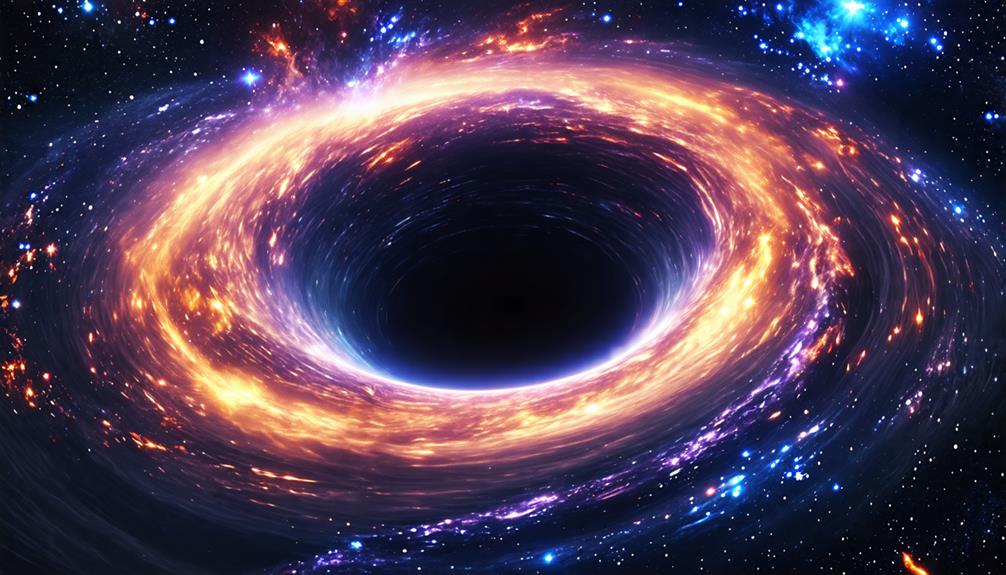
Gravitational time dilation becomes particularly significant near a black hole. As you approach the Schwarzschild radius, time slows down considerably relative to an observer far from the black hole. This phenomenon, predicted by General Relativity, has been substantiated through various observational evidence and experiments. Understanding these effects is crucial for comprehending the broader implications of gravitational fields on the fabric of spacetime.
Gravitational Time Dilation Explained
Gravitational time dilation occurs near massive objects, causing time to flow more slowly for those in strong gravitational fields compared to those in weaker fields. This effect becomes especially pronounced near black holes, where time changes drastically as one approaches the event horizon. Here are the key points:
- Proper Time: Within the gravitational field of a black hole, an observer experiences proper time, which significantly diverges from that of an observer far from the black hole.
- Event Horizon Effects: As you approach the event horizon, time for you appears to freeze when viewed from an external observer's perspective, even though you continue to experience the passage of time normally.
- Schwarzschild Metric: This mathematical model describes how gravitational time dilation increases as you get closer to a black hole, illustrating the curvature of spacetime as described by general relativity.
Schwarzschild Radius Impact
The Schwarzschild radius fundamentally alters the experience of time for objects near a black hole, creating extreme differences in time perception between observers near the event horizon and those far away. As you approach this critical boundary, time dilation intensifies dramatically due to the gravitational potential exerted by the black hole's immense mass. To an external observer, it appears as if time for you slows to a crawl, eventually freezing at the event horizon.
For example, a clock positioned just outside the Schwarzschild radius might record one year, while an observer light-years away would perceive that as approximately 141 years. This demonstrates the relativistic effects of gravitational force on time. Within 1.5 times the Schwarzschild radius, stable orbits are impossible, leading to rapid accelerations and even more significant time dilation as you near the event horizon. The curvature of spacetime in this region bends the paths of both light and matter, amplifying the discrepancies in time perception. Consequently, the Schwarzschild radius not only defines a boundary but also exemplifies the profound impact of gravity on time itself.
Observational Evidence and Experiments
How do real-world experiments confirm the effects of time dilation predicted by general relativity? Several key studies and observations illustrate gravitational time dilation, showing how gravity influences time near massive objects like black holes. Here are three notable examples:
- Hafele–Keating Experiment: This involved flying atomic clocks on airplanes and comparing their time measurements to those of stationary clocks on the ground. Differences in altitude and speed demonstrated the time dilation effects predicted by relativity.
- Pound–Rebka Experiment: This experiment measured the frequency shift of gamma rays in a gravitational field, confirming relativity's predictions and highlighting how light signals are influenced by gravity, which directly correlates to time dilation.
- GPS Satellite Technology: GPS satellites, orbiting in weaker gravitational fields and moving at high speeds, experience time differently compared to clocks on Earth. Adjustments are necessary for accurate positioning, showcasing real-time effects of gravitational time dilation.
Additionally, observations of stars orbiting supermassive black holes near the event horizon reveal significant aging differences compared to distant observers. These experiments and observations collectively reinforce the understanding of time dilation in the context of relativity.
Observational Evidence of Time Dilation
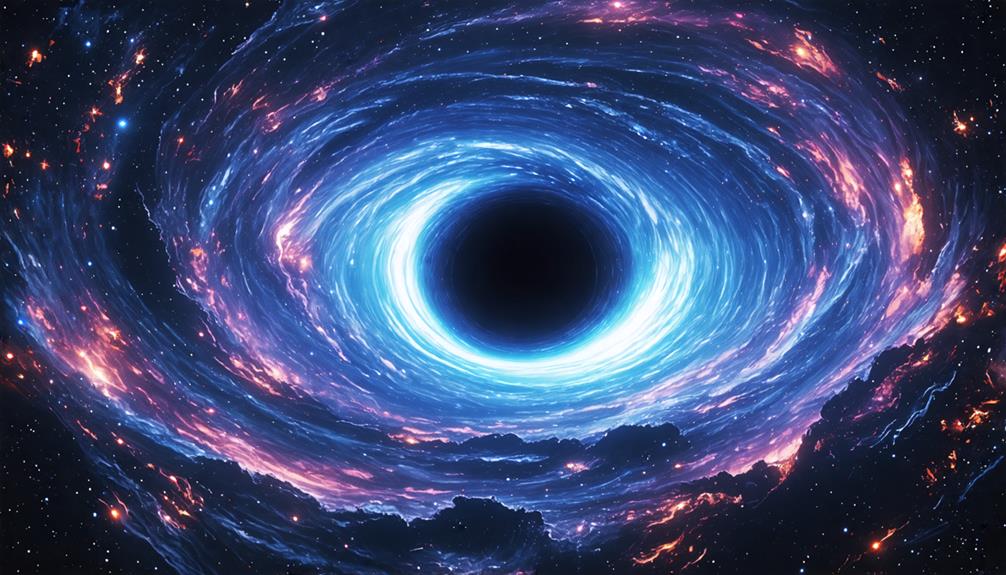
When observing the universe, astronomical data reveal significant redshift in light from stars near black holes, indicating that time moves more slowly in these intense gravitational fields. Experimental confirmations, such as the Hafele–Keating experiment, demonstrate that time dilation is a measurable reality. These findings deepen our understanding of the interplay between gravity and time.
Experimental Confirmation Methods
Experimental methods have provided compelling evidence for time dilation, confirming predictions made by both special and general relativity through various innovative approaches. Key experiments include:
- Hafele-Keating Experiment: Scientists flew atomic clocks on airplanes and observed that these clocks experienced slight time differences compared to stationary clocks on the ground, confirming the effects of both gravitational and velocity-induced time dilation.
- GPS Satellites: The onboard clocks of GPS satellites run faster than ground-based clocks due to their altitude and speed. Adjustments are necessary to ensure accurate positioning data, which corroborates both special and general relativistic predictions.
- Pound-Rebka Experiment: This experiment measured frequency shifts in gamma rays emitted from a source at the top of a tower compared to those at the bottom, providing further evidence of gravitational time dilation.
Additionally, observations of merging black holes via gravitational waves detected by LIGO demonstrate time dilation. The emitted signals reveal frequency changes consistent with general relativistic effects. Together, these experiments illustrate how time dilation operates in our universe, especially in scenarios involving high velocities and strong gravitational fields.
Gravitational Redshift Observations
Gravitational redshift observations illustrate the profound effects of intense gravitational fields, such as those near black holes, on emitted light. As light escapes these fields, it stretches to longer wavelengths, shifting toward the red end of the spectrum, which directly evidences time dilation.
Astronomers have observed significant redshift in the light from stars orbiting supermassive black holes. The Hubble Space Telescope has also detected redshift in X-rays from accretion disks around black holes, confirming general relativity's predictions. These observations align with theoretical expectations of time dilation in strong gravitational fields.
Additionally, light from quasars powered by supermassive black holes exhibits gravitational redshift effects that correlate with the black hole's mass and proximity to the event horizon. The Pound-Rebka experiment further validates these findings by demonstrating that light rising from a gravitational field experiences a measurable frequency decrease. Collectively, these observations deepen our understanding of gravity's influence on time and light in the universe.
The Role of Spacetime Geometry
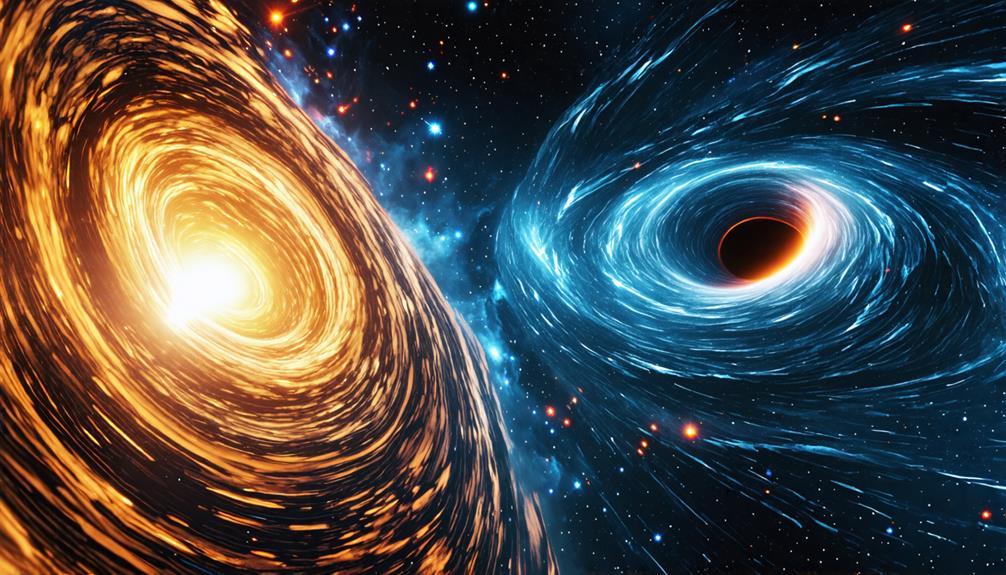
Spacetime geometry is pivotal in understanding how black holes influence time for observers at varying distances. The Schwarzschild metric, which describes this curvature, elucidates the impact of gravity on time dilation. Here's what this means for you:
- Time Dilation Effects: As you approach a black hole, time significantly slows down due to gravitational time dilation. Your clock would tick more slowly compared to someone further away.
- Event Horizon: At the event horizon, the boundary of a black hole, time appears to stop for distant observers. This dramatic shift in spacetime geometry alters the perception of time.
- Schwarzschild Radius: This critical radius marks the point where spacetime curvature becomes extreme. Inside this boundary, the laws governing time and space fundamentally change.
Grasping these concepts illuminates the profound effects of gravity on time. The closer you get to a black hole, the more pronounced these effects become. General relativity predicts that as gravitational potential increases, the discrepancies in time experienced by different observers widen, highlighting the intricate relationship between spacetime geometry and time.
Impact of Black Hole Properties
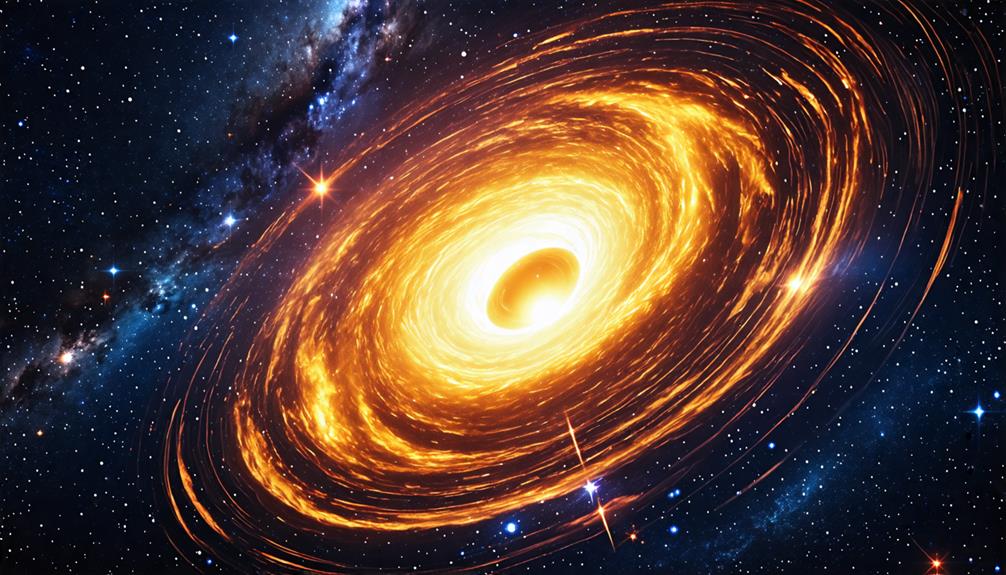
The properties of a black hole, particularly its mass and spin, significantly influence time dilation experienced by nearby objects, resulting in notable differences in temporal perception for observers. A black hole with greater mass generates stronger gravitational effects, thereby intensifying time dilation. For non-rotating black holes, or Schwarzschild black holes, stable orbits exist only beyond three Schwarzschild radii. Approaching the event horizon drastically alters the perception of time, where time appears to slow down considerably.
Conversely, rotating black holes, known as Kerr black holes, enable stable orbits closer than three Schwarzschild radii due to the frame-dragging effect caused by their spin. This results in complex time dilation scenarios depending on the observer's position relative to the black hole's spin axis. Near the event horizon, time effectively comes to a standstill, leading to significant aging discrepancies between someone near the black hole and an observer at a safe distance.
A clock near the event horizon ticks much slower; what feels like one year for you could equate to decades or even centuries for an observer farther away. Understanding these black hole properties is crucial for comprehending the profound implications of time dilation in our universe.
Time Dilation in Circular Orbits
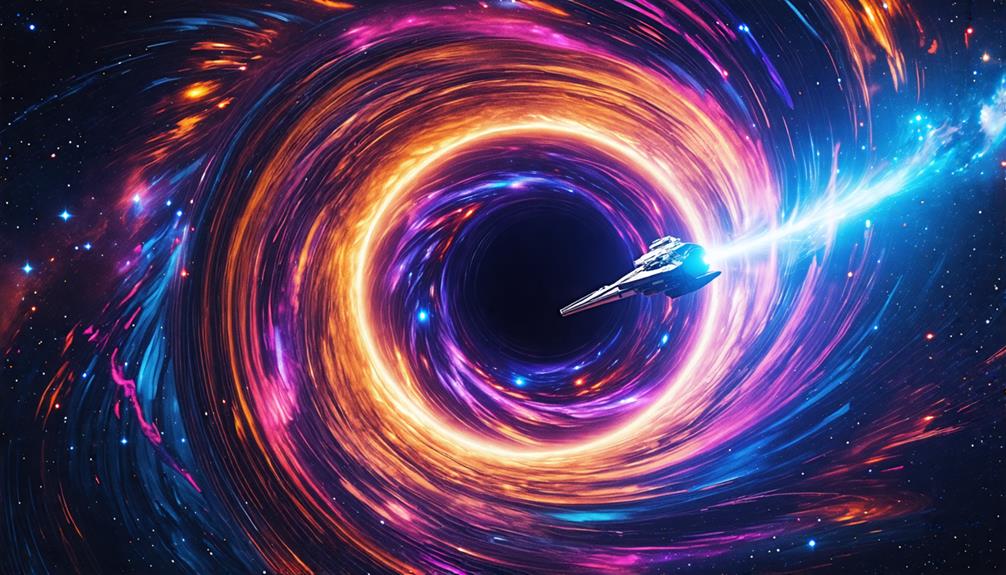
In circular orbits around black holes, time dilation effects become increasingly pronounced, causing clocks to tick more slowly compared to those far from the gravitational influence. This phenomenon vividly illustrates the principles of relativity, as the intense gravitational fields near black holes warp the fabric of spacetime.
Here are three key points to consider about time dilation in these orbits:
- Stable Orbits: For a non-rotating black hole, the minimum stable orbit, known as the innermost stable circular orbit (ISCO), is located at 3 Schwarzschild radii. Within this boundary, time dilation significantly affects the passage of time for an observer in orbit.
- Aging Discrepancies: A clock in a stable orbit near the ISCO might record just a year, while decades or even centuries could pass for an observer far away. This discrepancy underscores the extreme effects of gravity on the passage of time.
- Frame-Dragging: In the case of rotating black holes, frame-dragging effects allow stable orbits closer than 3 Schwarzschild radii, further complicating the relationship between time and motion in such intense gravitational fields.
Understanding these principles helps illustrate how gravity profoundly influences time in circular orbits around black holes.
Experimental Confirmations of Theory
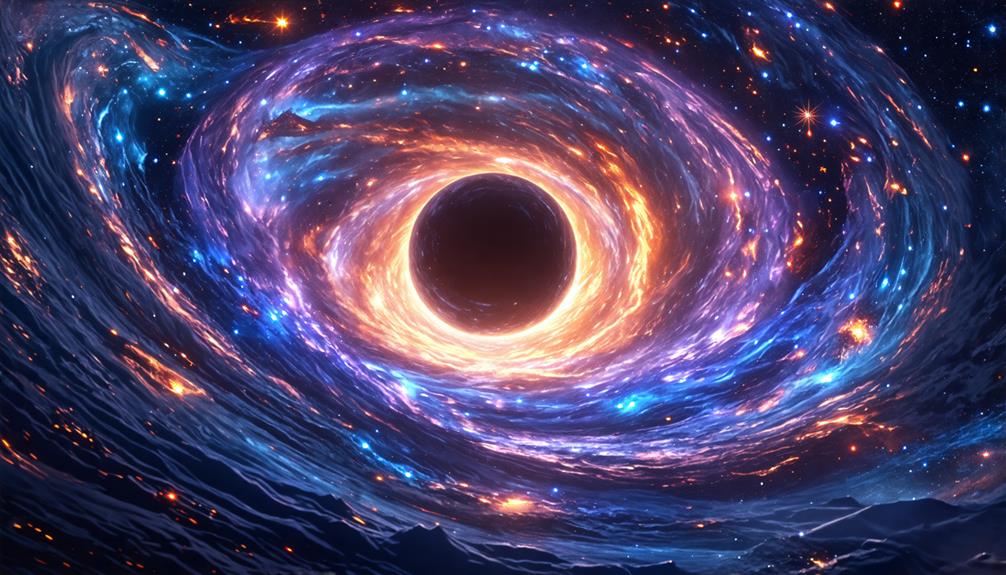
Numerous experiments have confirmed the theory of time dilation, demonstrating its effects in various contexts, from high-altitude flights to the depths of space near black holes. These experimental confirmations highlight the practical applications of relativity and how gravity influences time.
| Experiment | Key Findings |
|---|---|
| Hafele–Keating | Clocks on commercial flights experience time dilation due to gravitational potential and velocity. |
| GPS Systems | Satellite clocks tick faster due to weaker gravity, requiring a correction of 38 microseconds per day. |
| Pound–Rebka | Confirmed gravitational redshift, linking the frequency shift of light to time dilation. |
The Hafele–Keating experiment demonstrated that atomic clocks onboard airplanes measure time differently due to changes in gravitational potential and velocity. In GPS systems, adjustments are necessary because satellite clocks, positioned in weaker gravity, experience different timeframes than those on Earth. The Pound–Rebka experiment validated gravitational redshift by observing the frequency shift of light emitted from a higher gravitational potential, further confirming the relationship between time dilation and gravity. Additionally, studies on merging black holes through gravitational waves reveal how extreme gravitational fields influence the passage of time, solidifying our understanding of time dilation in these cosmic phenomena.
Implications for Aging and Perception
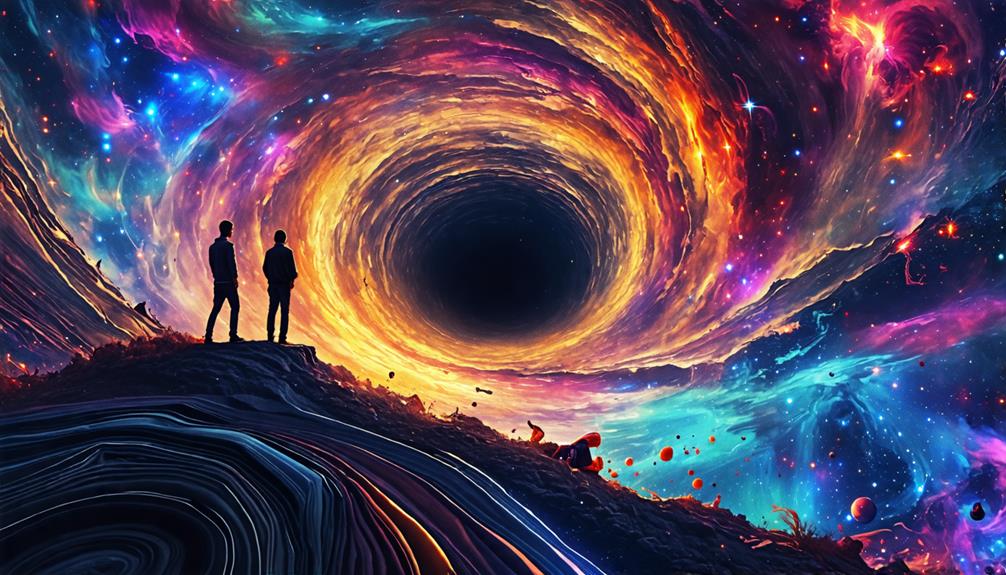
Experiencing time dilation near black holes significantly alters lifespan rates and perceptions of time for both observers and objects in their vicinity. As you approach the event horizon, the intense gravitational field slows your clock relative to one far away, leading to dramatic differences in the perception of time and biological aging.
Consider these implications:
- Lifespan Rates: Objects and observers near a black hole age much slower than those farther away, complicating our understanding of life cycles in such extreme environments.
- Perception of Time: Distant observers perceive objects near the event horizon as frozen and dim, underscoring the paradox of time perception between different gravitational fields.
- Theory of Relativity: Einstein's equations demonstrate how gravitational effects directly impact the flow of time, confirming that time is not a constant but rather a variable influenced by mass and distance.
In essence, time dilation near black holes reshapes our understanding of lifespan and time, offering profound insights into the nature of the universe.
Future Research Directions
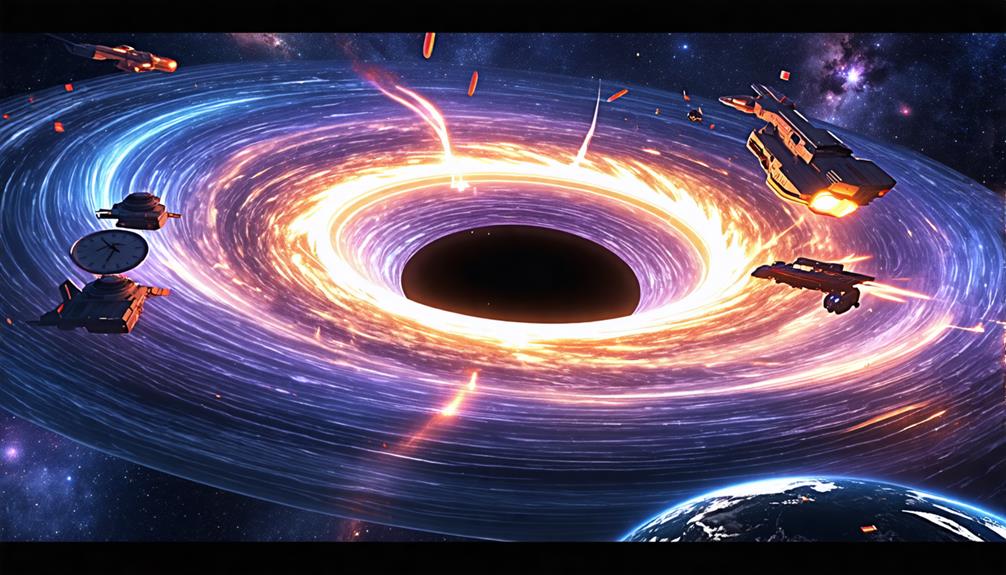
Future research will leverage advanced gravitational wave detectors to examine time dilation effects during black hole mergers and their impact on spacetime geometry. By focusing on rotating (Kerr) black holes, researchers can investigate frame-dragging effects that influence particle orbits, thereby enhancing our understanding of gravity's interplay with time.
With improved observational techniques, such as high-resolution imaging of accretion disks, scientists will be able to measure time at varying distances from supermassive black holes with greater accuracy. This will elucidate how time dilation affects objects in extreme gravitational environments, providing essential insights into the dynamics of black holes.
Additionally, theoretical models predicting the relationship between time dilation and galaxy formation will be examined, particularly in regions dominated by supermassive black holes. Researchers might also explore how time dilation impacts biological processes, revealing how life adapts to diverse cosmic conditions. This could lead to groundbreaking revelations about the resilience of life and its potential to thrive in extreme environments. Altogether, the future of understanding time dilation near black holes holds exciting possibilities for both astrophysics and biology.
Conclusion
Time dilation near black holes reveals the intricate relationship between gravity and time, challenging our conventional understanding of these concepts. As you approach a black hole, time significantly slows down relative to areas farther away, due to the immense gravitational forces at play. This phenomenon not only enhances our comprehension of spacetime but also paves the way for groundbreaking research, encouraging deeper exploration into the universe's profound mysteries.

